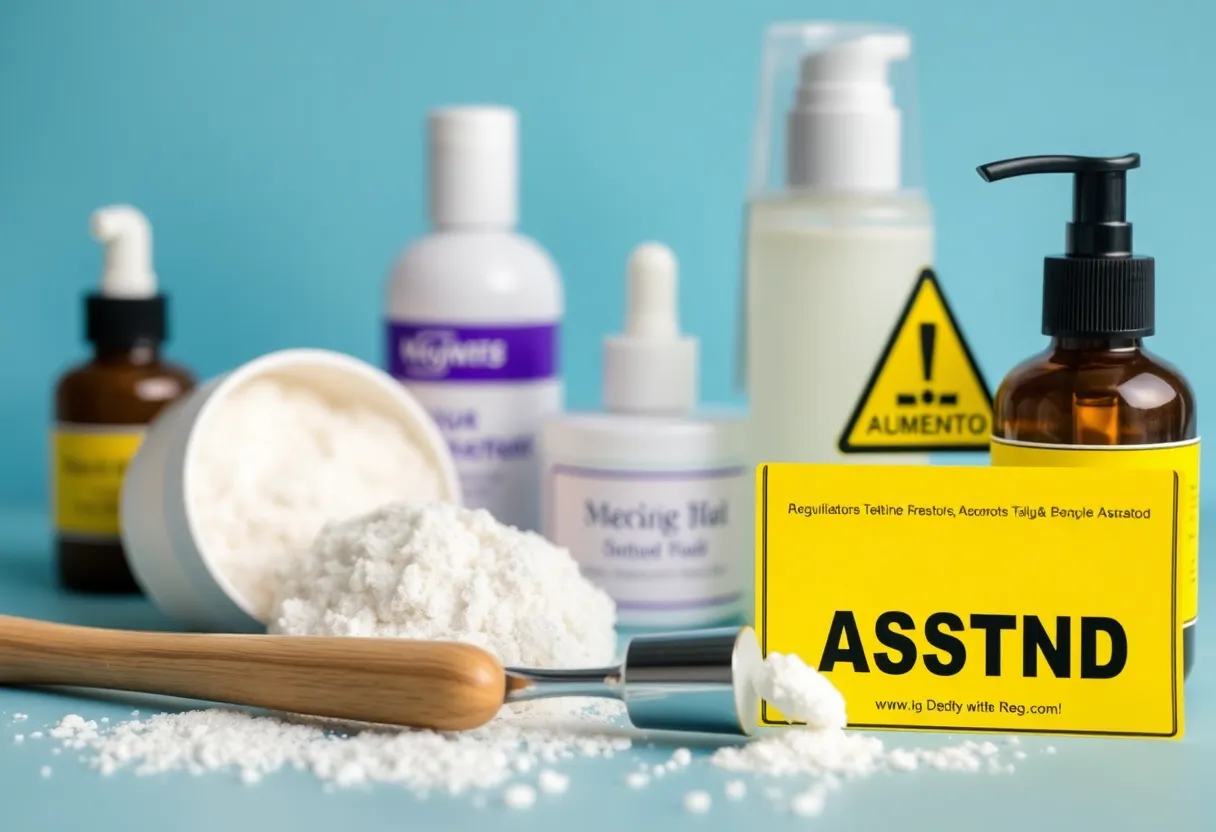News Summary
Major Change on the Horizon for Asbestos Testing in Cosmetics
In a groundbreaking move to safeguard consumer safety, the U.S. Food and Drug Administration (FDA) is taking significant steps towards regulating talc-containing cosmetic products amidst growing concerns regarding asbestos exposure. On December 27, 2024, the FDA unveiled a proposed rule under the landmark Modernization of Cosmetics Regulation Act (MoCRA), marking a historic shift in how beauty products will be scrutinized for harmful materials.
New Standards for Manufacturers
The newly proposed regulations obligate manufacturers to conduct thorough testing for the presence of asbestos in their talc-containing products. This will require them to not only test each batch of products but also maintain meticulous records concerning these tests. If manufacturers choose to rely on a certificate of analysis from a qualified talc supplier, it is imperative that this supplier adheres to the FDA’s outlined testing protocols using recommended methods: polarized light microscopy (PLM) and transmission electron microscopy (TEM) combined with energy dispersive spectroscopy (EDS) and selected area electron diffraction (SAED).
The proposed rule stipulates that manufacturers are required to keep records of their asbestos testing or supplier certifications for a period of three years. These documents must be readily available to the FDA within one business day of request. If manufacturers fail to comply with these regulations, their products could be deemed adulterated, subjecting them to severe penalties under the Federal Food, Drug, and Cosmetic Act (FDCA).
Repercussions of Asbestos in Talc
The urgent need for these regulations is underscored by the alarming findings from previous tests conducted by the FDA. In 2019, an alarming nine out of 52 talc-containing powder products tested by the FDA’s contract laboratory were found to contain asbestos, prompting immediate voluntary recalls. These troubling results have sparked a chain reaction of legal actions against prominent companies like Johnson & Johnson, as consumers have cited potential links between talc exposure and serious health risks, including cancer.
In light of the mounting evidence and pressure, Johnson & Johnson made the pivotal decision to remove talc from their baby powder in the U.S. in 2020, followed by an international ban on its usage in 2023. This move reflects an industry-wide pivot towards greater consumer safety.
Addressing Consumer Concerns
The FDA’s proposed rule emphasizes the seriousness of any level of asbestos presence in talc products. The definition of “asbestos” in the new guideline encompasses various types of asbestos minerals, which underscores the FDA’s commitment to protecting consumer health. The American Cancer Society has weighed in, suggesting that while the risk of cancer from talc exposure could be minimal, the presence of asbestos creates substantial concern.
As more beauty enthusiasts and consumers become aware of product safety and the potential risks associated with asbestos, the FDA’s proposed regulations reflect a long-awaited evolution in how cosmetics will be scrutinized in the regulatory landscape.
A Call for Public Feedback
The FDA is opening the floor for public comments on this proposed rule, with a deadline set for March 27, 2025. This allows stakeholders, including manufacturers, consumers, and advocacy groups, to share their perspectives on this pivotal legislation. As the FDA positions itself as a champion for cosmetic safety, the proposed testing standards aim to ensure that any product containing talc will be rigorously vetted for harmful asbestos.
In conclusion, the FDA’s proposed asbestos testing rule signifies a significant stride toward enhanced consumer safety in the cosmetics industry. As the implications of this rule unfold, manufacturers are urged to review the recommendations, adjust accordingly, and align with the FDA’s renewed commitment to consumer health and safety.
Deeper Dive: News & Info About This Topic
HERE Resources
Waveny House Takes Action Against Asbestos Threat
Asbestos Use During World War II: A Hidden Threat to Veterans
Asbestos Removal Leads to Major Renovations at Edison Public Library
New FDA Rule Aims to Combat Asbestos in Talc-Containing Cosmetics
Asbestos Discovery Causes Budget Surge in Avery Business Park Project
Bound Brook Memorial Library Set to Close Due to Asbestos Issues
Veterans Advised to Seek Compensation for Asbestos-Related Illnesses
New FDA Proposal Targets Asbestos in Talc-Containing Cosmetics
Asbestos: The Silent Killer Still Lurking in Workplaces
FDA Proposes Landmark Rule to Tackle Asbestos in Talc-Containing Cosmetics
Additional Resources
- AP News: Major Changes in FDA Regulations on Talc Products
- Wikipedia: Asbestos
- CBS News: FDA Proposes New Regulations on Talc Products
- Google Search: FDA regulations on talc products
- Reuters: FDA Proposes Standardized Testing for Asbestos in Talc
- Google Scholar: Talc asbestos regulations
- Pulmonology Advisor: FDA’s Proposed Rule on Talc Products
- Encyclopedia Britannica: Asbestos



















